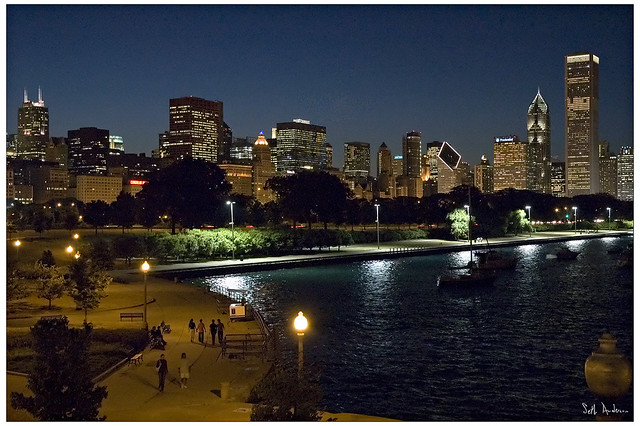I’m pleased to note that Union Station is getting a rehab, a long over-due rehab, opening up hidden rooms and so forth. Can’t wait – Union Station is such an iconic Chicago building, yet it has been seemingly neglected for a while, probably due to the inexplicable animosity the GOP has towards Amtrak and passenger trains in general.
John Hilkevitch reports:
Amtrak is betting millions of dollars to transform Union Station into an entertainment and tourist destination, complete with restaurants and outdoor cafes, retail, a hotel and even a grocery store, Getting Around has learned.
Amtrak wants to open up thousands of square feet of space long closed to the public, literally throwing open the doors to the 90-year-old building in a bid to return the landmark station to its heyday in the 1940s and ’50s.
Hidden deep inside Union Station are palatial rooms with 33-foot-high ceilings and assorted alcoves that have been mothballed for decades. During the golden age of passenger rail, those spaces were filled with ritzy restaurants, coffee shops (including the fabled Harvey House), a dance hall, tailoring shops specializing in custom suits, law offices and more.
…
Behind locked doors is the former Women’s Waiting Room, adorned with murals dating to the station’s opening in 1925, a period when female passengers would take refuge from the rough-and-tumble of traveling alone and freshen up during a stopover in Chicago by using pay showers.
Other hidden spaces, tucked behind the station’s marble walls and ornamental iron bars that cover part of the building’s facade, collect dust. Some of Union Station’s doors fronting Canal Street, potential portals to outdoor cafes, haven’t been cracked open in years, officials said.
…
Sanders said a well-known high-end grocery chain has expressed interest in opening a food emporium at Union Station. Sanders also said he envisions a hotel on the station’s second floor, with the hotel entrance and marquee on Adams Street between Canal and Clinton streets. He’s already dreaming about reinstalling canopies that once gracefully draped the entrances to Union Station, he said.
(click here to continue reading Amtrak plans Union Station makeover – Chicago Tribune.)

Ready to Take That Night Train To Memphis
Either Whole Foods or Mariano’s, I’d guess, even though both have stores nearby on Halsted.
And I should pop over, and snap a few photos of the staircase in its current worn condition, just for posterity.
In the meantime, the Canal Street entrances will be closed for more than two months starting around July 15, when work is scheduled to begin to replace both sets of the worn marble steps connecting the Great Hall to the station’s main entrance on Canal, where CTA buses stop. The combination deli and bar under the steps has closed in preparation for the work.
The friction from countless pairs of shoes over the years has effectively sanded down the marble, creating indentations on the treads of the steps, which display the most wear and tear near the brass railings.
The grand staircases are famous in their own right, having been filmed and photographed repeatedly in images seen around the world. There’s a dramatic scene in the 1987 film “The Untouchables” where Kevin Costner, playing mob crime fighter Eliot Ness, exchanges gunfire with Al Capone’s gang while a runaway baby carriage rolls bump by bump down the marble stairs.
New marble for the steps was recently cut out of the same quarries near Rome where 100 years ago the marble for the original Union Station steps was mined, Sanders said.













































